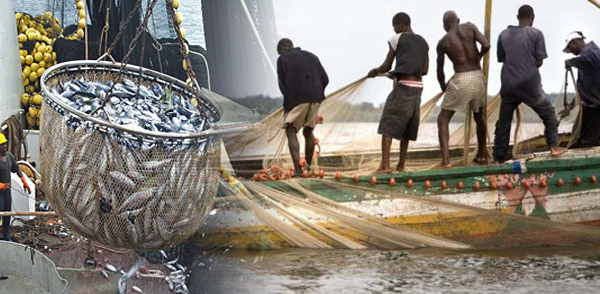- Washington “follows with interest” Morocco’s openness onto Africa (John Kerry)Posted 11 years ago
- The trial of South African Paralympic champion Oscar Pistorius opened in Pretoria on Monday.Posted 11 years ago
- USA welcomes efforts of King Mohammed VI in MaliPosted 11 years ago
- Egypt’s population reaches 94 millionPosted 11 years ago
- Mugabe celebrates his 90thPosted 11 years ago
- Moroccan Monarch to Build a Perinatal Clinic in BamakoPosted 11 years ago
- King Mohammed VI handed a donation of bovine semen for the benefit of Malian breeders.Posted 11 years ago
- Moroccan King’s strategic tour to Africa: Strengthening the will of pan African Solidarity and stimulating the south-south cooperation mechanisms over the continentPosted 12 years ago
- Senior al-Qaida leader killed in AlgeriaPosted 12 years ago
- Libya: The trial of former Prime Minister al-Baghdadi AliPosted 12 years ago
Africa: the artisanal fishing vs. industrial fishing and Tourism
 The threats posed to the environment by the industrial development and the competitiveness of tourism and fishing on a large scale lead to review the laws governing the access to the sea if you want to protect the African artisanal fisheries from these new dangers. Despite the fact that industrialisation in Africa is only in its infancy, fishing however suffers already from environmental degradation, mainly caused by industrial waste or by the existence of oil wells which have direct or indirect depletion of the fisheries resources.
The threats posed to the environment by the industrial development and the competitiveness of tourism and fishing on a large scale lead to review the laws governing the access to the sea if you want to protect the African artisanal fisheries from these new dangers. Despite the fact that industrialisation in Africa is only in its infancy, fishing however suffers already from environmental degradation, mainly caused by industrial waste or by the existence of oil wells which have direct or indirect depletion of the fisheries resources.
We should not forget that the European Union has signed fishing agreements with almost all the coastal African countries, allowing about 300 European vessels to work in their fishery waters. The U.E is the largest importer of seafood from Africa, but the paradox is the little income of all the African fishery resources that goes only to the fragile African fishermen community.
Tourism is also a danger to the artisanal fishermen and represents unfair competition for traditional fishing. However, the greatest danger remains that posed by the fishing industry. This form of fishing, which has greatly developed with the support of African governments and international aid projects, is a competition for artisanal fisheries in the way that it occurs, too often, near the coast, in the areas reserved traditionally to the artisanal fishery. Finally, industrial fishing has resulted in serious ecological damage, not only to the artisanal fisheries, but also more broadly to the entire marine ecosystem. The symptoms of this mismanagement are well known in the short-term: overfishing, no species’ selection, no compliance with fish size, use of predatory techniques such as trawling or dagger, scraping sea funds; all these illegal operations destroy the ecosystem.
It is urgent then to take measures to regulate the fisheries’ industry. Some countries have already introduced a legislation aiming to regulate the fishing techniques and equipment, to impose fishing seasons, impose a fishing capacity tonnage by controlled fishing license delivery and ban the commercial fishing in some areas. It should be noted however that these measures are difficult to apply in the absence of professional personnel, well-structured Navies and coast guards to perform the maritime policing and control.
The main objective here is not putting the industrial fishing against the artisanal fishing, because overfishing is no longer just the panacea of the fishing industry but also that of the artisanal fisheries due to the technological revolution that had transformed the techniques, like the purse seines that can pick up to twenty tons of fish with a single launch. This biological overexploitation is coupled with the economic one when you have too many artisanal fishermen, in the same market and sharing the same resource, saw their shares decline and therefore the profitability of their investments reduced. These are problems requiring educational activities and self-discipline on the part of the fishing communities themselves as well as the attention and the vigilance of the authorities responsible for fisheries in each country.
